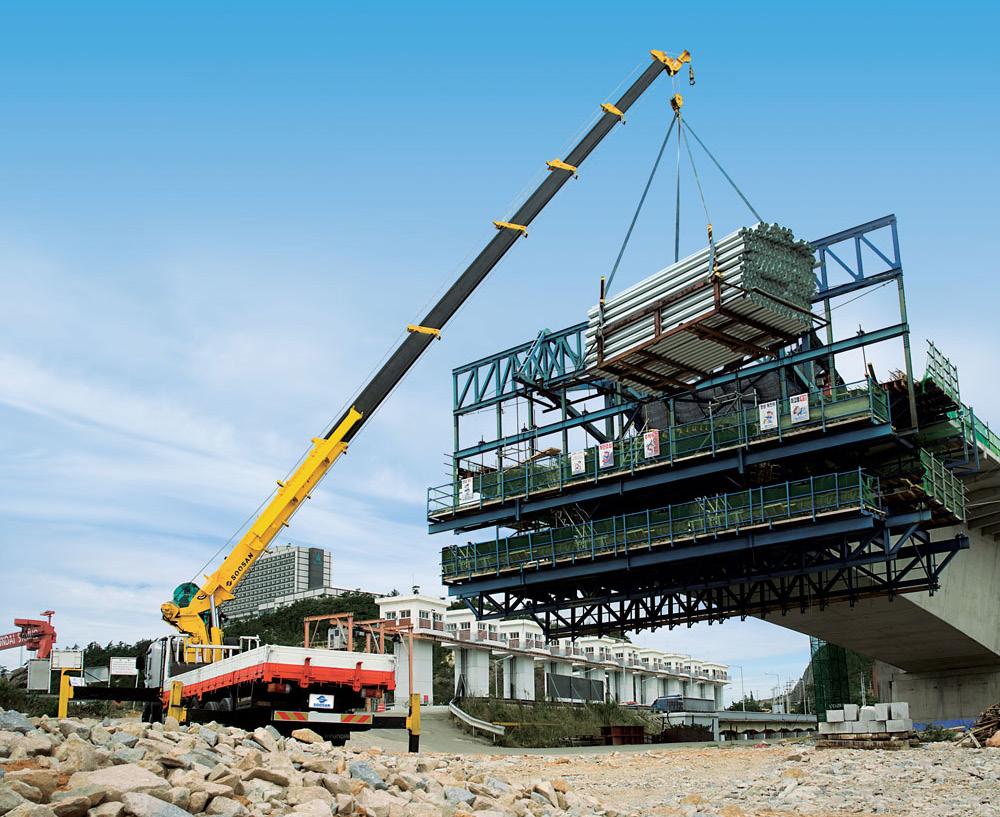
4 minute read
When installed and used properly, cranes are an operational delight
There is, however, no such thing in this industry as being too safe. When things go wrong it can have dire consequences causing severe injuries and even death. Phil Hackler of Spanco recently discussed three of the biggest hazards in the lifting environment along with preventative measures.
Hazards exist with all types of cranes—including overhead cranes—and in all facets of crane operation. While well-trained operators go a long way in reducing accidents and incidents, preventing disasters also requires workers to recognise certain hazards that occur during operation and follow safety procedures to avoid them.
Electrical Hazards
It is estimated that at least 50% of overhead crane accidents are the result of machinery coming into contact with a power source during operation, says Hackler. “Power line contact is literally defined as the inadvertent contact of any metal part of a crane with a high-voltage power line.” He says power line contact most often occurs when the crane is moving materials nearby or under energized power lines and the hoist line or boom touches one of them. “Usually, the person who is electrocuted is touching the crane when it comes into contact with the power line. But, the danger is not just limited to the operator. It extends to all personnel in the vicinity.” A single contact with a power line can result in multiple deaths and injuries. According to Hackler power line contacts most often occur because safety planning isn’t considered and preventative measures haven’t been taken to avoid hazards. “Planning is one of the biggest accident deterrents available. To start, it’s important to establish who is in charge of prejob safety planning before any cranes arrive at a worksite,” he says. “Furthermore, cranes should be kept away from unsafe working areas. Legislation in each country outlines safe distances operators must maintain from a power source when working at a job site. Areas that are considered hazardous are referred to as danger zones, and crane operators should be clearly notified of all potential danger zones.” He advises a 3 meter radius of a power line as being an unsafe work area—or danger zone. “Mark the area clearly on the ground by insulated barriers, fences, tape. This will help create visual clues for workers to ensure that the crane is always positioned so that the boom and hoist line can’t intrude in the danger zone.” This, however, is not enough, and overhead crane operators should also use precautions when working near power lines.
“Consider all power lines as energised until the electric company tells you otherwise. Operators should also maintain a safe speed when operating near power lines. “Crane booms or truck-mounted trolleys using an electrical remote control system for loading and unloading can also be very dangerous. If the boom contacts a power line, the operator holding the control box is usually electrocuted instantly. This type of equipment should never be used near power lines. A non-conductive, pneumatic or radio remote control system is a much safer choice when working near power lines.”
Overloading
It is estimated that one crane upset occurs for every 10 000 hours of crane use. More often than not exceeding the operational capacity is at fault. “When a crane is overloaded, it is subject to structural stresses that may cause irreversible damage. Swinging or sudden dropping of the load, using defective components, hoisting a load beyond capacity, dragging a load and side-loading a boom can all cause overloading.” Hackler says too many operators mistakenly believe they can rely on their instinct or experience. Training goes a long way to eliminating these kinds of incidents. “It’s crucial that any crane operator know the weight of a load and the capacity of the crane. Using technologies such as load-measuring systems for training and planning can greatly reduce the hazard of overloading and operator incompetency.”
Materials falling
Falling materials, says Hackler, is a major concern at any workplace or job site using overhead cranes. “Visual impairment, two-blocking, slipping, mechanical failure, or operator incompetency can all result in serious injuries or fatalities. If materials are not properly secured, for instance, the load can slip and land on workers in the vicinity or cause major damage to property. For larger or mobile cranes, undesired movement of material can pinch, or crush workers involved in the rigging process.” Statistics show that an average of 44 people died per year between 2011 and 2015 as a result of accidents with overhead hoists. “That’s because the loads being lifted by overhead hoists tend to be fairly heavy and cause serious damage if dropped. Slings and attachments that aren’t secured properly can be a major safety hazard, and when objects begin to slip, they will eventually crash to the floor below.” Hackler says one way to reduce the risk of falling materials is to perform regular maintenance of hoists. “Load testing maintenance ensures that you know how many kilograms the hoist can handle, and it helps to maintain good working condition.”
To reduce risk, operators should make daily crane inspections.
Employees working around overhead cranes should also always wear proper head, foot, hand, and eye protection. The crane operator and any workers below should also be aware of his/her surroundings and never walk under a lift, he says. Furthermore “hoist danger” signs should be placed prominently around the working area.











